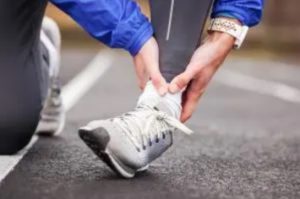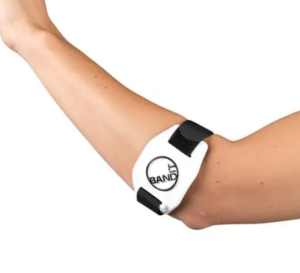Sports injuries can vary widely depending on the type of sport, the level of competition, and the mechanisms of injury. Some of these injuries you may have experienced yourself while others you may have heard of or even seen them happen on television. Our team at PhysioNow has treated many athletics and sports injuries over the years and would love to share our experiences with them!
1. Ankle sprains/tears
Often, injuries to the ankle ligaments are seen as a result of a running or jumping sport. In most cases, the ankle gets bent too far in a certain direction, resulting in fibers of the ankle ligament(s) getting torn. In the initial stage, ice, rest and management of pain and swelling are key. Most people will require some sort of brace or boot and take around 8 weeks to recover with physiotherapy.
2. ACL Tear
ACL tears are a very serious injury that many athletes require surgical intervention for. Tears or ruptures happen in this stabilizing ligament during sudden movements, especially rapid changes in direction, starting and stopping, and pivoting on the knee. After a surgical repair, a strict rehabilitation protocol with a physiotherapist is key for athletes to recover.
3. AC Joint Injuries
The AC joint in the shoulder is usually injured through a fall onto on outstretched hand or in contact sports where the arm gets forcefully shoved across the body. This usually results in tears in the joint capsule and ligament that holds the 2 bones together. As a result, it may produce a bump above the shoulder from the collar bone sticking out. Depending on the extent of the tear, surgical intervention may or may not be necessary, with physiotherapy following to mobilize and strengthen the shoulder.
4. Hamstring or groin strains
The 2 most commonly pulled muscles occur at the back or inside of the leg. For athletes, the high speed and forceful movements of jumping, kicking, and sprinting put these 2 muscles under a lot of stress. Some strains may heal on their own, but many would benefit from athletic physiotherapy to speed the recovery process up, and ensure that strength, coordination and balance returns to the athlete fully.
5. Meniscal Injuries
The menisci are like little cushions inside our knees that act as shock absorbers. They are commonly injured alongside other structures in the knee including the MCL, LCL, and ACL ligaments. Outcomes for the menisci can be highly variable and will likely require thorough examination by a physiotherapist and orthopedic surgeon to establish a prognosis.
6. Rotator cuff injuries
Our shoulders are a very complex joint that sacrifices stability for mobility. As a result, they are commonly injured structures, especially in overhead and throwing athletes. The first line of treatment for athletes is physiotherapy to rehabilitate the muscle and where that fails, surgery may be required.
7. Fractures
Broken bones are common no matter what sport, but the type and severity of the fracture will change the rehabilitation. Some cases will require a surgical repair immediately, while others will need to be casted for 6-8 weeks. Afterwards, once cleared by a doctor, athletic physiotherapy will be started immediately to restore the mobility and strength of the affected area.
8. Tennis/Golfer’s Elbow
Most likely to be seen in throwing or racket sports, this is an overuse injury affecting your elbow and forearm. The muscles that control or wrist experience a lot of strain when hitting and throwing which can result a stress injury. Usually, there is inflammation, pain, swelling, and difficulty gripping/carrying objects.
9. Jumper’s Knee
Jumper’s knee is an overuse injury causing pain right below the kneecap, on the patellar tendon. High intensity and repetitive motions can irritate the tendon causing tenderness, swelling, and inflammation. Athletic physiotherapy may consist of education on bracing, activity modifications, and therapeutic exercises to help you restore your normal function.
10. Concussion
Concussions are traumatic brain injuries that are common sport injuries due to the high-speed nature of many sports. Contact sports like hockey, football and rugby athletes are at higher risk of concussions. They are usually paired with a neck/whiplash injury as well, and can produce a whole host of visual, vestibular, cognitive and physical symptoms.
All of these conditions are commonly seen in our physiotherapy clinics across the GTA. If you or someone you know is looking for athletic physiotherapy for one of the conditions above, or any other sports injuries, we would love to help! PhysioNow can offer same day emergency treatments as well. Book with PhysioNow today for your first assessment and treatment!







Leave a Reply